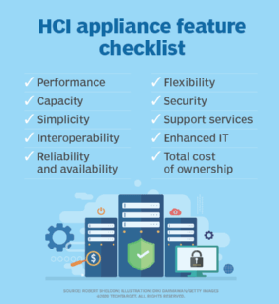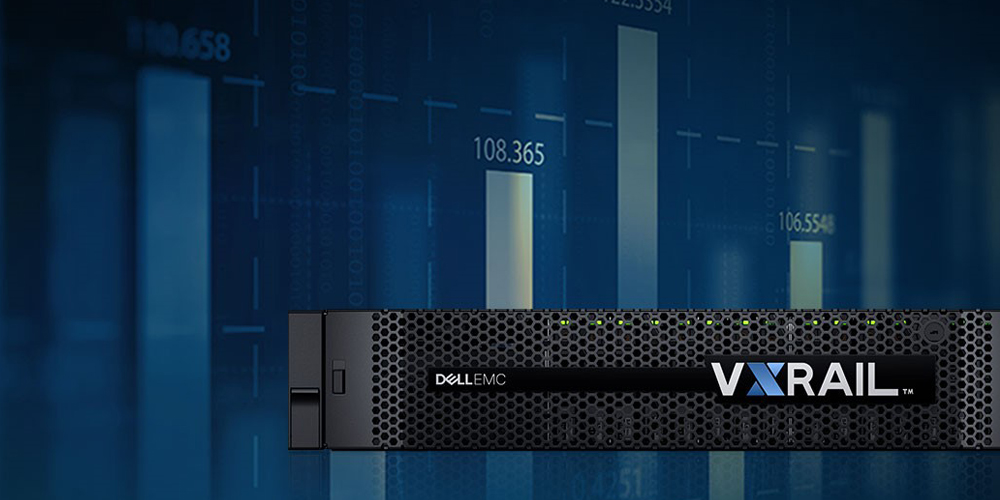Dell EMC VxRail hyper-converged appliance
There is no current combination between Vx, Rail manager and v, Center in the form of plugins. With that stated, there does not seem to be any major holes in between the management tools. I appreciate how you can see detailed hardware on each node through v, Center. EMC has actually refocused much needed attention into this item line with the bulk of benefits anticipated (but not yet seen) on Vx, Rail 3.
Initial discussions with clients show that there is extremely strong interest in the product and that is most likely the case do to the enhanced configure-to-order options, more competitive rates, and the reality that it is part of the greater EMC ecosystem. My initial experience with it in the AHEAD Lab and Bmorenews.Com Rundown Center was extremely favorable; I had no concerns deploying the appliance and the automated deployment wizards were perfect.
Nowadays, anyone can write up a stunning roadmap, however the secret will be if EMC and VMware have the ability to deliver on it. Numerous of the features that I am excited to see are addressing things that I consider to be weak points, such as enhanced management tools, integration/consolidation, and extra data services that are not totally established in the current variation of Vx, Rail.
check out this blog post about
Hyperconvergence vs. Converged Infrastructure?
.
5 release in June will be an important event for the product and for EMC. If successful, it will develop itself as a strong contender in the HCI area and will officially clear much of the remaining unpredictability triggered by its predecessor, VSPEX Blue. Here are some follow-up points that I want to attend to over the next couple of months: Vx, Rail Supervisor (EVO: RAIL Supervisor) provides a simplified GUI for customers, with the advantage being that it empowers staff with limited experience to handle the solution.
Sangfor HCI – Hyper Converged Infrastructure
HYPER CONVERGED INFRASTRUCTURE
Curious to see how Vx, Rail snaps into other EMC management tools (Vision) for larger customers. This is specific to Vx, Rail 3. 5 and the all-flash nodes. I am anticipating seeing performance and capability numbers once we allow deduplication and compression. The AF variation has incredible density potential on the storage front, with 38 TB of functional SSD capacity before dedup and compression in a 2U kind factor.
Not doing so implies that it will be challenging to adjust compute/memory/storage ratios as work change gradually without building new clusters.
 Diamanti Launches Hyperconverged Infrastructure Appliance, Raises $18M Data Center Knowledge News and analysis for the data center industry
Diamanti Launches Hyperconverged Infrastructure Appliance, Raises $18M Data Center Knowledge News and analysis for the data center industryLet’s chat and get you up to speed with Dell Vx, Rail on Equinix Metal.
More effective IT operations1 Lower facilities costs1 Most likely to make better, faster, http://essexgigguide.Co.uk/forum/profile/archieslowik695 data-driven decisions 2.
Hyperconverged Infrastructure Software Reviews 2022
Today’s services want IT to have less moving partswhile still using the very same or expanded resources to users. This demand has resulted in a shift: Far from a one-to-one relationship between physical servers and storage Towards a many-to-one relationship in between virtual makers and a single-storage controller One major complication with virtualizing workloads, though, is that it increases storage capacity requirements, often resulting in an enormous volume of redundant data.
Thankfully, converged facilities (CI) fixes these issues. By combining work, you simplify procedures and make your company carry out better. As CI develops, hyperconverged facilities (HCI) is the natural next action. HCI is growing in popularity, with an approximated increase in CAGR at 22% from 2019-2023. Professionals in IT frequently see HCI as the very best chance for organizations to becoming more like the cloudthat is, providing IT as a service.
 Separating Compute And Storage In Hyperconverged Infrastructure
Separating Compute And Storage In Hyperconverged InfrastructureIt works by using foundation. is a software-based method to assembling storage and Read the Full Guide processes. This typically suggests deployment on commodity parts. Notably, the term ‘hyperconverged’ here does not indicate that this innovation transcends to regular converged infrastructures. Assembled facilities lower the need for big, physical setups, permitting you to assemble and optimize several systems at as soon as.
 Hyperconverged Infrastructures and https://cbcnnews.com Big Data DevStacks
Hyperconverged Infrastructures and https://cbcnnews.com Big Data DevStacksIn a non-converged architecture, physical servers run a virtualization hypervisor that manages each of the virtual makers (VMs) that have been created on the server. For information storage, there are generally three alternatives: A storage-area network (SAN) Direct-attached storage (DAS) Network-attached storage (NAS) With assembled architecture, storage is attached straight to the physical server.
Hyperconvergence vs. Converged Infrastructure?
In this setup, flash storage is nearly constantly used. (The need for costly SAN and NAS, in particular, is eliminated.) Hyperconverged facilities has a storage controller function that runs as a service on every node in the cluster, which is why this is categorized as software-defined storage. Many typically, essential data that you require to access quickly is kept local (hot storage) while less important data is stored on the actual servers (warm or freezer).
Assembled infrastructure is an approach to information center management that intends to lessen compatibility problems between storage systems, servers, and network devices. A secondary objective of CI is to decrease costs that are associated with physical elements consisting of everything from floor area and cooling to power and cabling. CI integrates storage and calculate into a single physical appliance that is little, vibrant, and powerful.
Standard storage typically includes: A controller A rack of shelves with SSD or HDD ranges Assembled storage combines these components into a node-based storage platform that provides remarkable redundancy. Everything is included in a single box, and you can scale simply by adding more nodes when needed. Converged storage options are available in a vast array of sizes, and they may be all flash or hybrid arrays.
Instead of adding a brand-new shelf, as in traditional storage, you offload the workload to a converged storage system. This makes sure that there is a feasible information storage solution for the foreseeable future. There are lots of benefits to this solution, Why Hyper-Converged Infrastructure Makes Sense For VDI consisting of: Better combination Easier management Lower costs In a normal unified architecture, the compute, network, and storage components stay different.
Sangfor HCI – Hyper Converged Infrastructure
HYPER CONVERGED INFRASTRUCTURE
Making use of nodes is clear in Nutanix’s Acropolis hypervisor. ( Source) This choice makes sense for organizations that deploy data center platforms that utilize the exact same vendor across numerous hardware technologies. It also boosts security substantially. Unified architecture tends to be fairly pricey, which can be a stumbling block for organizations wanting to get the benefits of a converged infrastructure.
Storage management in CI systems is processed as an application. This leads to an assembled, combined platform. Networking is essential to a degree, and it’s normally accomplished via the hypervisor, which indicates that no actual pieces of networking hardware are needed. Unlike virtual architecture, Hyperconverged infrastructure will evolve into cloud building CI is usually comprised of simply storage and calculate.
There are many benefits to this method: Conserve time on release Decrease implementation costs Simplify overall management through the unification of information center controls When the leading benefits of CI are thought about, it is easy to see why so lots of companies are adopting this technology. A few of the most compelling advantages of CI include: CI is basically a plug-and-play service.
